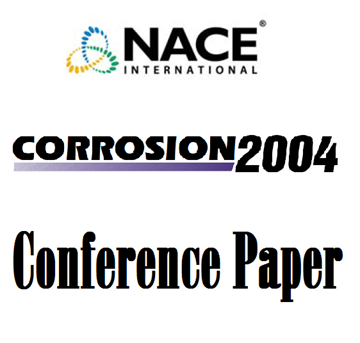This study takes place in the framework of Generation IV reactors and in particular in the new Sodium Fast Reactor project in which the Fe-9Cr martensitic steel T91 is considered as structural material for steam generator. Indeed Fe-9Cr steels are already widely used in high temperature steam environments - like boilers and steam turbines- for their combination of creep strength and oxidation resistance.Oxidation of T91 alloy in steam leads to the formation of duplex oxide scale made of an inner Fe-Cr spinel layer and an outer magnetite layer. Depending on equivalent oxygen partial pressure an external hematite layer may also be present. Stresses resulting from the oxide growth can lead to cracking and failure of the scale leading to partial spallation of the oxide scale loss of its protective properties and possible increase of oxidation kinetics.The aim of this study is to investigate the growth kinetics of the oxide scale the T91 steel oxidation mechanism and the main origins of scale spallation under water vapor at 823K.A first set of long term oxidation tests has been performed in pure water vapor. Two samples are removed at regular time intervals cooled in air observed by SEM and analyzed by Raman spectroscopy. Results show that buckling and spallation appear systematically on Fe-Cr steel samples after 200 hours of oxidation. Surfaces and cross-section observations reveal that buckling then spalling always occurs inside the magnetite layer a few microns above the Fe-Cr spinel/magnetite interface. Raman spectroscopy analyses have showed that after spallation oxidation may appear on the remaining magnetite layer depending on the temperature at which spallation has occurred. The main origins of a preferential buckling zone have been studied in details. It turns out that microscopic voids and cavities are predominantly observed in the magnetite layer near from the Fe-Cr spinel layer interface. Porosity may affect the development and relaxation of strains and stresses in the oxide thus weakening the external layer of the oxide. Hence it appears that in the case of T91 steel oxidation an estimation of voids formation rate voids growth and voids migration in the magnetite layer is crucial for predicting the spallation of the oxide scale.Maruyama and al. [1] have proposed a semi-quantitative prediction of the position of voids in the magnetite scale formed on iron at 823 K by calculating the chemical potential distribution inside the magnetite scale. Hence knowing the driving force for fluxes of mobile species the maximum flux divergence can be estimated at the voids formation position. On the other hand Martinelli and al. [2] have successfully adapted the Available Space Model to the oxidation of T91 steel to model the oxide scale growth kinetics in various media. In this work we propose to combine models from Maruyama’s and Martinelli’s works.First a case of duplex oxide (spinel/magnetite) scale has been developed. Second the model has been adapted to the case of spinel/magnetite/hematite system in order to reproduce oxidations of Fe-Cr steels in water vapor at 823 K.To simulate the growth kinetics of the duplex oxide scale and the position of voids in the magnetite layer the main hypotheses are the following:Hypothesis 1: Iron diffuses across the two oxide (spinel/magnetite) scales lattices.Hypothesis 2: The Fe-Cr spinel layer grows at the T91/oxide interface and its thickness is linked to the magnetite layer with an equivalent ratio of almost 1.1. The iron flux across the Fe-Cr spinel only contributes to the formation of the magnetite layer. The Fe-Cr spinel layer growth rate is not controlled by oxidant transport but by the available space left by the iron diffusion from the alloy lattice to the oxide lattice.Hypothesis 3: The magnetite layer grows at the magnetite/wet environment interface and its rate is controlled by cationic diffusion through the oxide scale.Hypothesis 4: Oxidant diffuses under molecular form via short cut diffusion paths until metal/oxide interface.Following Martinelli and al. general equations can be derived under the assumption of local thermodynamic equilibrium. The effective diffusion coefficient of iron in magnetite and in Fe-Cr spinel is also determined by kinetics data of high temperature oxidation on Fe-Cr steels at 823K [3]. As iron cations interstitials and cationic vacancies are considered as the main diffusing species in the oxide scale their chemical potential gradients are determined between the oxygen partial pressure at each interface.Following Maruyama and al. the iron cation flux –and the corresponding opposite cationic vacancy flux- in the magnetite scale is calculated thanks to Dieckmann’s data [3]. The divergence of the flux along the scale exhibits a maximum value in the magnetite layer a few microns above the Fe-Cr spinel/magnetite interface. It suggests that there is an oversaturation of cationic vacancies in this part of the magnetite layer. This may lead to nucleation and growth of voids at the same position in the scale.Moreover this model has been extended to the triplex oxide scale which includes the external hematite layer. In this second modelling the oxygen partial pressure at the hematite/wet environment interface is taken equal to 10-6 atm. The hematite layer is demonstrated to grow exclusively at the external interface and its rate is controlled by cationic diffusion too. The model of Yurek and al. [4] for the formation of a duplex oxide layer is applied to the magnetite/hematite layer as it is assumed that the magnetite layer grows at this interface by reduction of the hematite layer.As for the duplex oxide scale it turns out that a maximum value of the divergence of flux of each species –iron cations and cationic vacancies- is reached in the magnetite layer. Then it appears from experimental results that the ratio between the voids distance to the Fe-Cr spinel/magnetite interface and the whole external layer thickness is systematically constant. A very good correlation between modelling and experimental work is obtained both for kinetics and voids position inside the scale.From experimental oxidation and the proposed advanced model for T91 scale growth one can conclude that germination and growth of voids and cavities in the magnetite layer is due to this vacancy accumulation. The migration kinetics of pores is linear to the growth kinetics of the whole external layer. The hematite layer exhibits a great influence in the position of voids in the magnetite layer. The proposed model is based on analyses of instantaneous flux. To be more quantitative numerical time integration of fluxes through the scale should be done.References:[1] Maruyama T. Mitsutoshi U. Kawamura K. Void formation in magnetite scale formed on iron at 823 K-Elucidation by Chemical potential distribution- Materials Science Forum Vol. 522-523 pp 37-44 August 2006.[2] Martinelli L. and Balbaud-Célérier F. Modelling of the oxide scale formation on Fe-Cr steel during exposure in liquid lead-bismuth eutectic in the 450-600°C temperature range Materials and Corrosion Vol. 62 N°6 2011.[3] Dieckmann R. and BackhausRicoult M. Defects and Cation diffusion in magnetite: Diffusion controlled formation of magnetite during reactions in the iron-oxygen system Ber. Bunsenges. Phys. Chem. Vol. 90 pp. 690-698 1986.[4] Yurek G. J. Hirth J. P. Rapp R. A. The Formation of two-phase layered scales on pure Metals Oxidation of Metals Vol. 8 N°5 1974.




